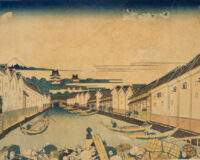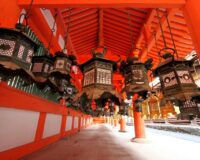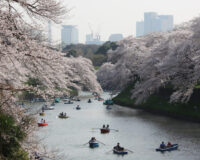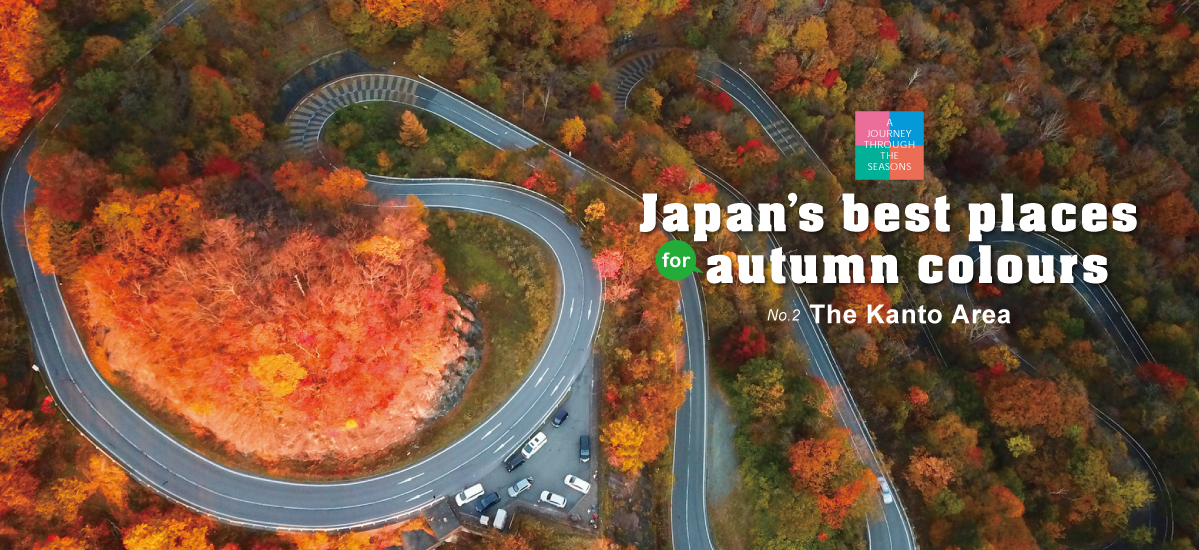
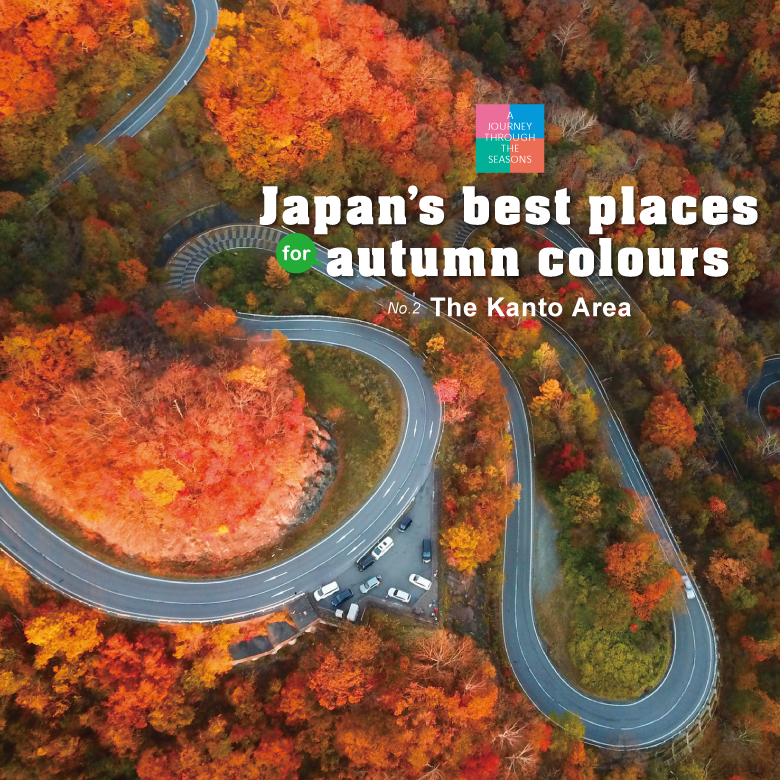
Every year in autumn, from the north to the south and from the mountains to the plains, a brightly coloured tapestry of reds, oranges and yellows ripples across the islands of Japan. All over the country, people are out and about making the most of the autumn scenery.
Text : Sasaki Takashi / English Version : Judy Evans
Keyword : Kanagawa Prefecture / Tochigi Prefecture / Nikko / Autumn Scenery / Autumn / Driving / Kantō / Ibaraki Prefecture
The Nichien Momiji Line (Nasushiobara City and Nikkō City, Tochigi Prefecture)
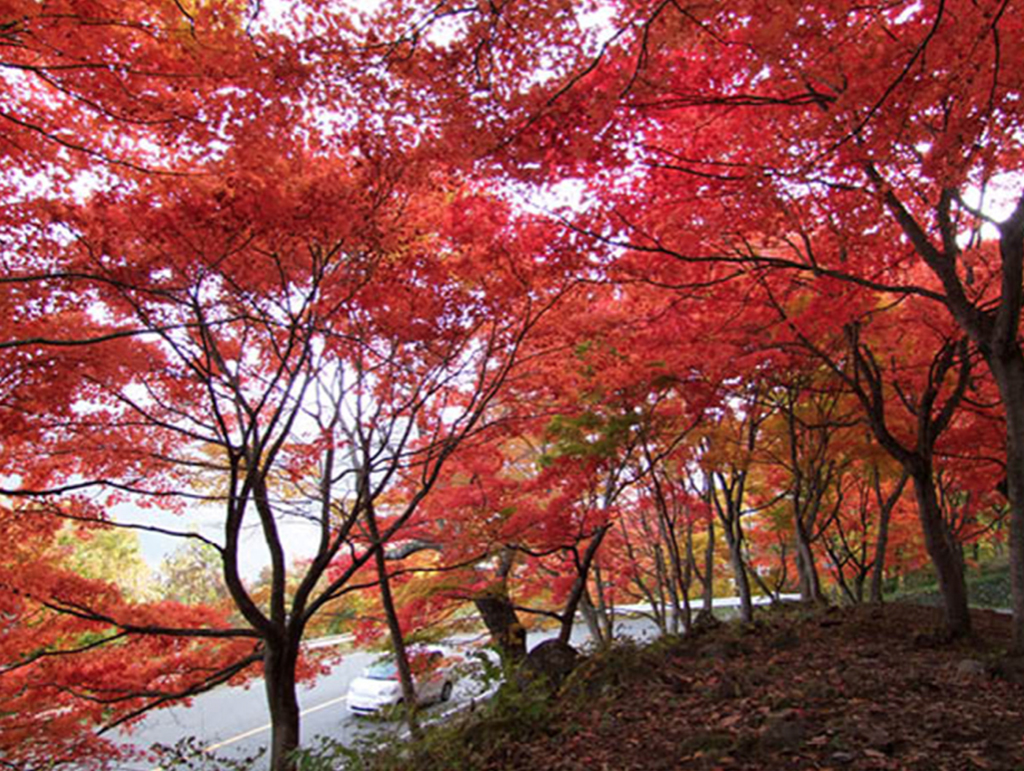
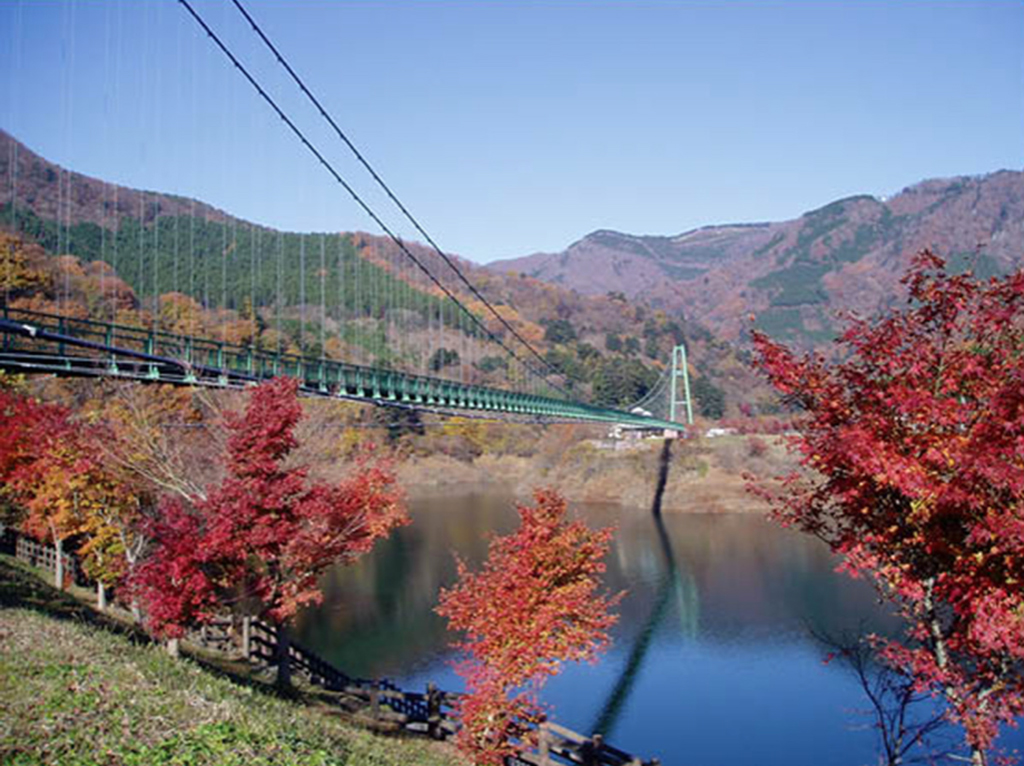
The Momiji Line lives up to its name
The scenic Nichien Momiji Line toll road linking Kinugawa Onsen with Shiobara Onsen Village passes through an area of highlands around 1,000 metres above sea level. A one-way car journey costs 610 yen. The brilliant scarlets of the momiji (Japanese maple) trees lining the road make this a stunning drive in autumn. The maples grow especially densely around the Shiobara toll booth, turning the roadsides bright red. The area has many popular autumn-colour viewing spots, such as Ryuōkyō Gorge at the southern end and Shiobara Onsen Village at the northern end of the Momiji Line.
◆ Best time for autumn colours: Late October to early November.
Access guide
◎ By bus: 30 minutes by regular bus from JR Nishi-Nasuno Station to the Nasushiobara City end of the Momiji Line.
◎ By car: About 40 minutes’ drive via Route 400 from Nishinasuno-Shiobara Interchange on the Tōhoku Expressway. About 50 minutes’ drive via Route 121 from Nikkō-Utsunomiya Toll Road.
Irohazaka Road and Nikkō (Nikkō City, Tochigi Prefecture)
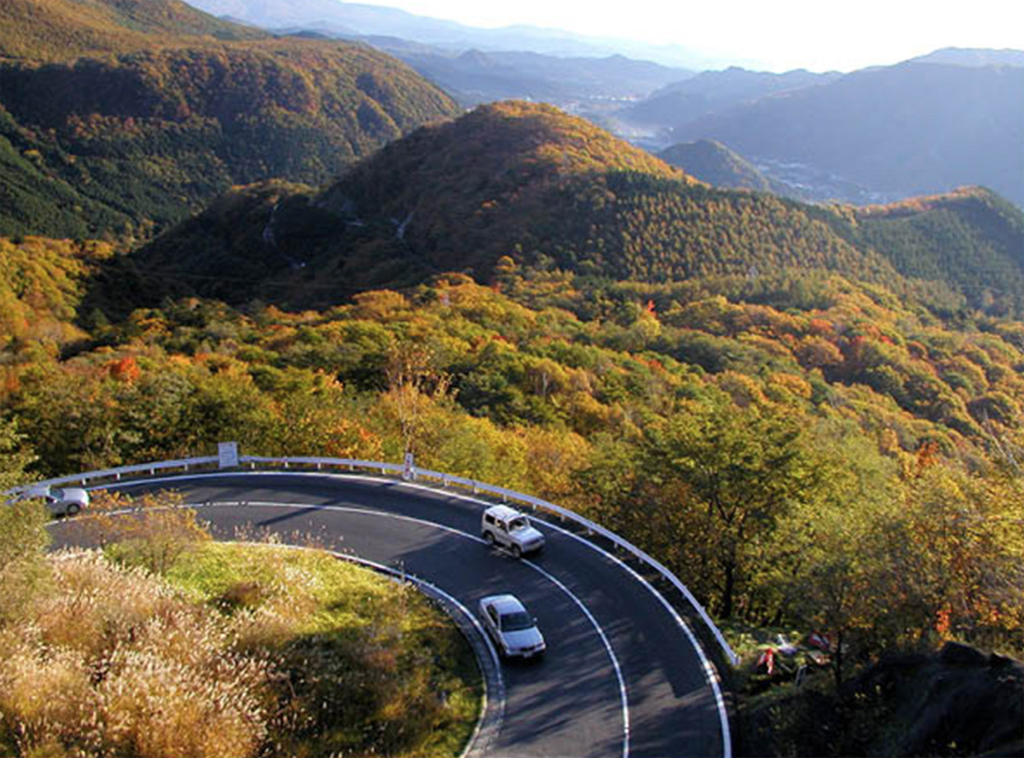
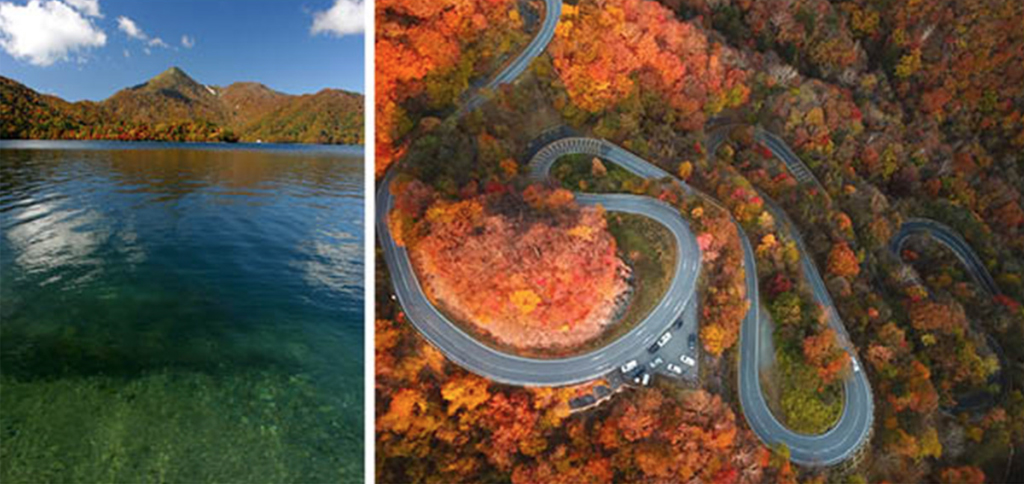
Irohazaka: the ultimate scenic drive
Irohazaka (Iroha Hill) is the scenic drive that connects urban Nikkō with Lake Chūzenji. The drive is separated into two routes. The oldest, or ‘First Irohazaka’, takes you down the hill, while ‘Second Irohazaka’ is for driving up only. ‘Iroha’ is the old name for the Japanese alphabet, which contains 48 symbols – the exact number of tight hairpin bends on each of the routes. In fact, each bend is marked with one of the 48 symbols. The lookout near the top of First Irohazaka offers great views of Kegon Falls.
◆ Best time for autumn colours: Mid to late October
Access guide
◎ By bus: About 40 minutes by regular bus from JR Nikkō Station or Tōbu Nikkō Station to Akechidaira.
◎ By car: About 10 minutes or 5 km to the start of Irohazaka from Kiyotaki Interchange on the Nikkō-Utsunomiya Toll Road.
Hitachi Seaside Park (Hitachi City, Ibaraki Prefecture)
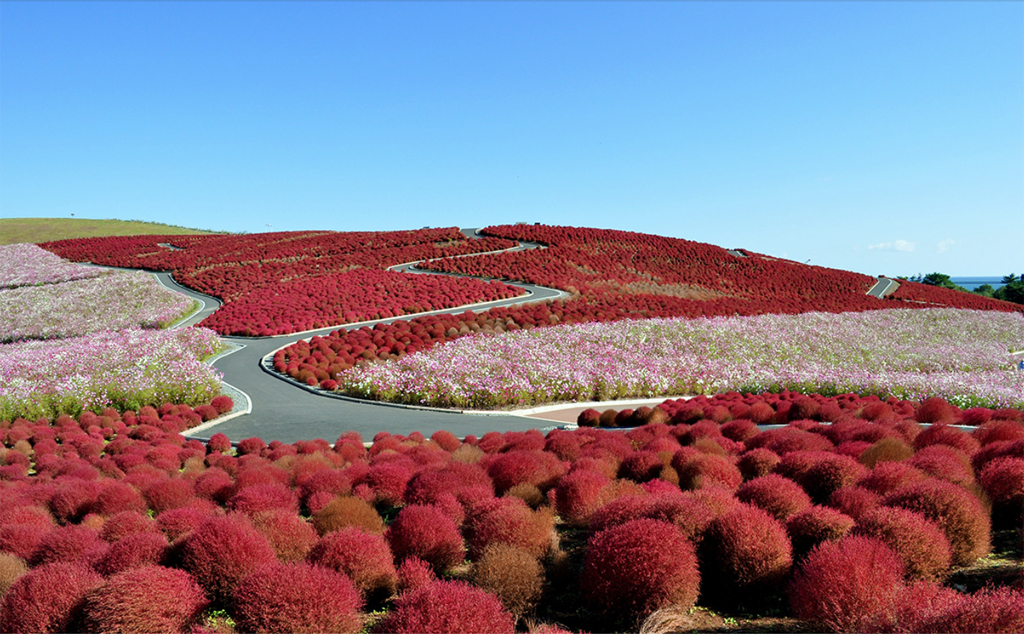
The crimson colours of autumn kokia
Hitachi Seaside Park boasts a myriad of beautiful floral displays throughout the seasons, but in autumn, it’s kokia that people come to see. There are some 32,000 kokia (Bassia scoparia) plants growing on the park’s ‘Miharashi no Oka’ hill, with walking paths meandering between the plantings. The kokia bushes all change colour in October, painting the entire hillside a vivid crimson.
★ Entrance fee 410 yen. Hours 9:30~17:30 (varies according to the season). Park closed on Mondays (except public holidays, when the park is closed on the Tuesday instead).
◆ Best time for autumn colours: Early to mid-October
Access guide
◎ By bus: 20 minutes by regular bus from JR Katsuta Station.
◎ By car: Approximately 15 km or 30 minutes’ drive from the Jōban Expressway Hitachi-Minami Ōta Interchange via Route 6.
Hakone and Sengokuhara (Hakone-machi, Kanagawa Prefecture)
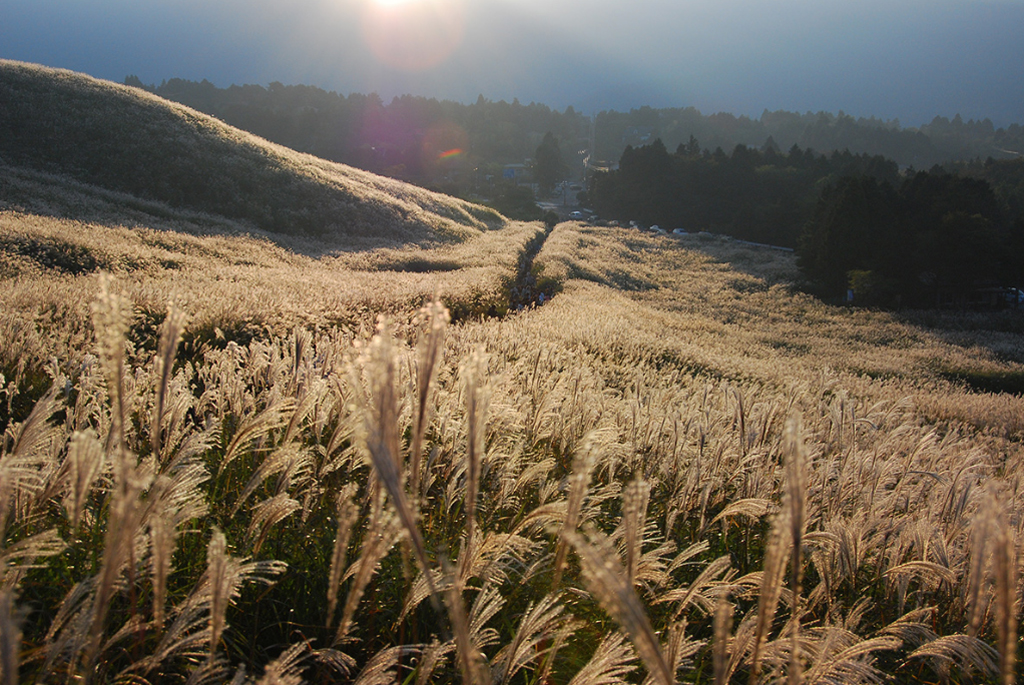
Hakone’s golden hillsides, shimmering in the autumn sun
Along with the autumn colours of Lake Ashinoko, Sengokuhara’s rolling fields of tall, waving susuki grass (Miscanthus sinensis) have become popular tourist attractions. In fact, Sengokuhara has been ranked among Kanagawa Prefecture’s top 100 sightseeing spots. Basking in the autumn sunshine, the hillsides take on the appearance of a fluffy golden carpet!
◆ Best time for autumn colours: Late September to mid-November
Access guide
◎ By bus: Approximately 30 minutes by regular bus from Hakone-Yumoto Station on the Odakyū Line. (Regular buses also run direct from Shinjuku, Tokyo.)
◎ By car: Approximately 30 minutes or 15 km from the Hakone-guchi Interchange on the Odawara-Hakone Toll Road.


